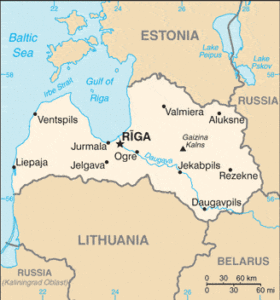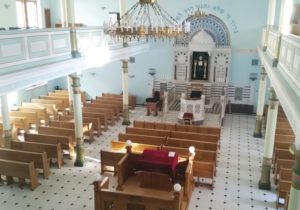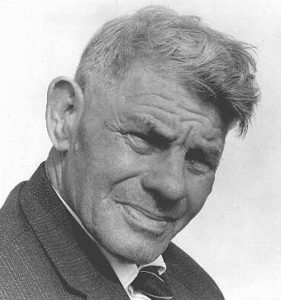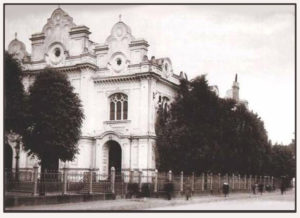 Jews have resided in the provinces of Livonia and Courland since the 15th century. In the 18th century, these provinces were incorporated into the Russian Empire. The provinces were not included in the Pale of Settlement, so only Jews who had resided there before incorporation into Russia were permitted to live there. However, the Jewish population increased because various classes of Jews, such as university graduates, received special dispensation to move there.
Jews have resided in the provinces of Livonia and Courland since the 15th century. In the 18th century, these provinces were incorporated into the Russian Empire. The provinces were not included in the Pale of Settlement, so only Jews who had resided there before incorporation into Russia were permitted to live there. However, the Jewish population increased because various classes of Jews, such as university graduates, received special dispensation to move there.
 By 1925, the Jewish population of the Latvian Republic was 95,675. In 1934, Latvia became a totalitarian state, and many Jews emigrated in the 1920’s and 30’s. The Germans occupied Latvia in July 1941. Only about 1,000 Latvian Jews survived the Holocaust. After WWII, Latvia became the Latvian Soviet Socialist Republic, part of the U.S.S.R. It regained independence in 1991. Most Latvian Jews have emigrated, and many Jews who now live in Latvia are immigrants from other former republics of the Soviet Union.
By 1925, the Jewish population of the Latvian Republic was 95,675. In 1934, Latvia became a totalitarian state, and many Jews emigrated in the 1920’s and 30’s. The Germans occupied Latvia in July 1941. Only about 1,000 Latvian Jews survived the Holocaust. After WWII, Latvia became the Latvian Soviet Socialist Republic, part of the U.S.S.R. It regained independence in 1991. Most Latvian Jews have emigrated, and many Jews who now live in Latvia are immigrants from other former republics of the Soviet Union.
 Latvia became part of Russia during the 18th century. Latvia first claimed independence after the Russian Revolution/World War I. Following the German occupation of 1941, ghettos were established in Riga, Dvinsk and Liepaja; the Nazi authorities were aided by local auxiliaries in the many atrocities that took place.
Latvia became part of Russia during the 18th century. Latvia first claimed independence after the Russian Revolution/World War I. Following the German occupation of 1941, ghettos were established in Riga, Dvinsk and Liepaja; the Nazi authorities were aided by local auxiliaries in the many atrocities that took place.
 Before World War II, there were more than 200 synagogues. Today, only two synagogues are used for worship — one in the capital Riga and another in the southern city of Daugavpils. Several others still stand. The so-called wooden Green Synagogue” in Rezekne and the Great Synagogue in Ludza have both been restored as cultural centres. Jānis Lipke, a dock worker in the port of Riga, was determined to help save Latvian Jews from capture by the Nazis after witnessing actions against them in the streets. He retrained in order to become a contractor for the Luftwaffe, and then used his position to smuggle Jewish workers out of the Riga ghetto and camps in and around Riga, whom he concealed with the aid of his wife Johana until the arrival of the Red Army in October 1944. The Lipkes and their various helpers saved forty people in this way, one fifth of the approximately 200 Jews who survived the war in Latvia.
Before World War II, there were more than 200 synagogues. Today, only two synagogues are used for worship — one in the capital Riga and another in the southern city of Daugavpils. Several others still stand. The so-called wooden Green Synagogue” in Rezekne and the Great Synagogue in Ludza have both been restored as cultural centres. Jānis Lipke, a dock worker in the port of Riga, was determined to help save Latvian Jews from capture by the Nazis after witnessing actions against them in the streets. He retrained in order to become a contractor for the Luftwaffe, and then used his position to smuggle Jewish workers out of the Riga ghetto and camps in and around Riga, whom he concealed with the aid of his wife Johana until the arrival of the Red Army in October 1944. The Lipkes and their various helpers saved forty people in this way, one fifth of the approximately 200 Jews who survived the war in Latvia.
 Riga Jewish Community is the heart of Jewish life in Latvia and the largest Jewish community in the Baltic States – it consists of approximately 8,000 members. There are up to 12,000 Jews in Latvia. The Riga Jewish Community commenced in 1988, with Latvian Society for Jewish Culture (LSJC). This marked the revival of Jewish social life in Latvia after the Soviet era. In 1993, LSJC became the Riga Jewish Community (RJC). This is aimed at preserving and promoting cultural heritage of Latvian Jews, supporting the youth movement and educational programmes, helping low-income members of the community, as well as at promoting social integration.
Riga Jewish Community is the heart of Jewish life in Latvia and the largest Jewish community in the Baltic States – it consists of approximately 8,000 members. There are up to 12,000 Jews in Latvia. The Riga Jewish Community commenced in 1988, with Latvian Society for Jewish Culture (LSJC). This marked the revival of Jewish social life in Latvia after the Soviet era. In 1993, LSJC became the Riga Jewish Community (RJC). This is aimed at preserving and promoting cultural heritage of Latvian Jews, supporting the youth movement and educational programmes, helping low-income members of the community, as well as at promoting social integration.